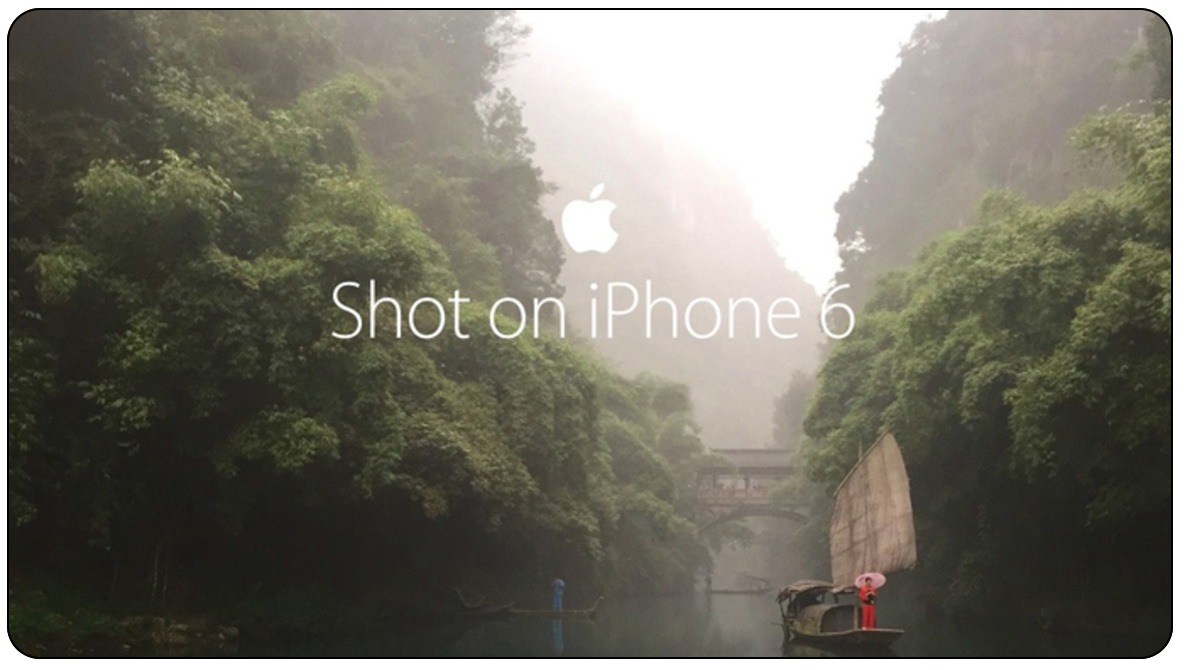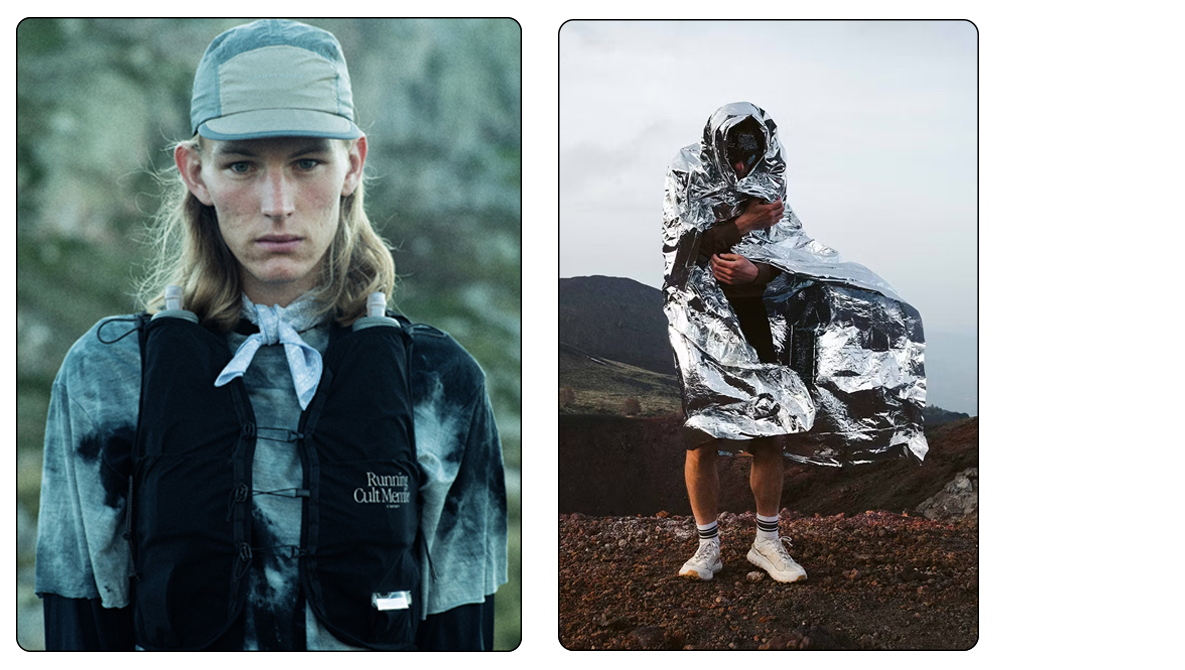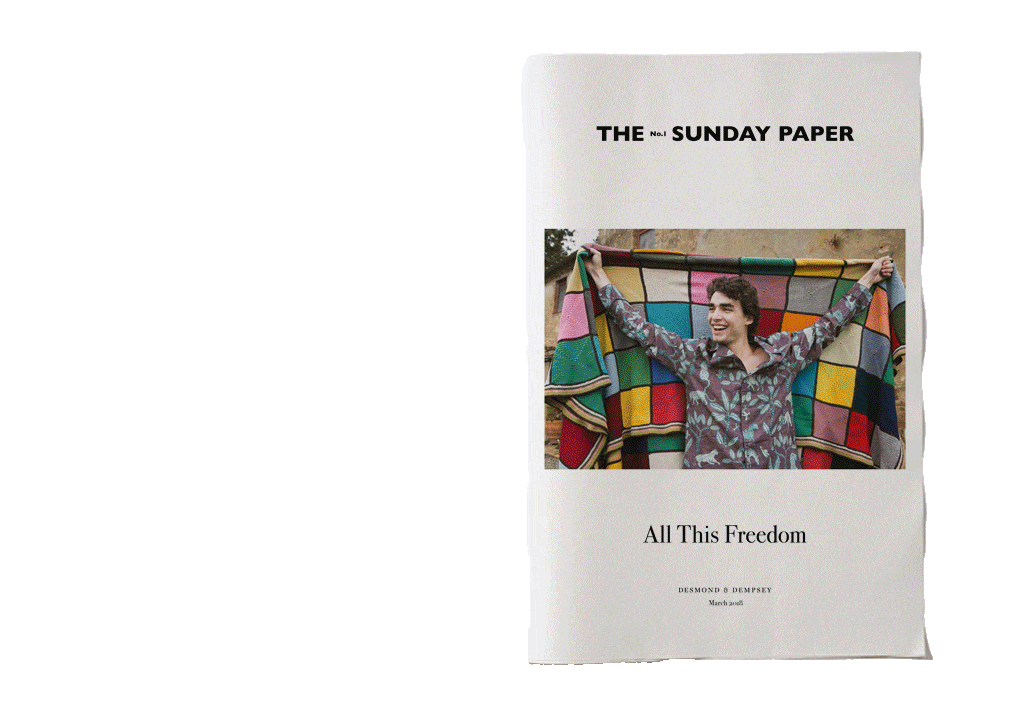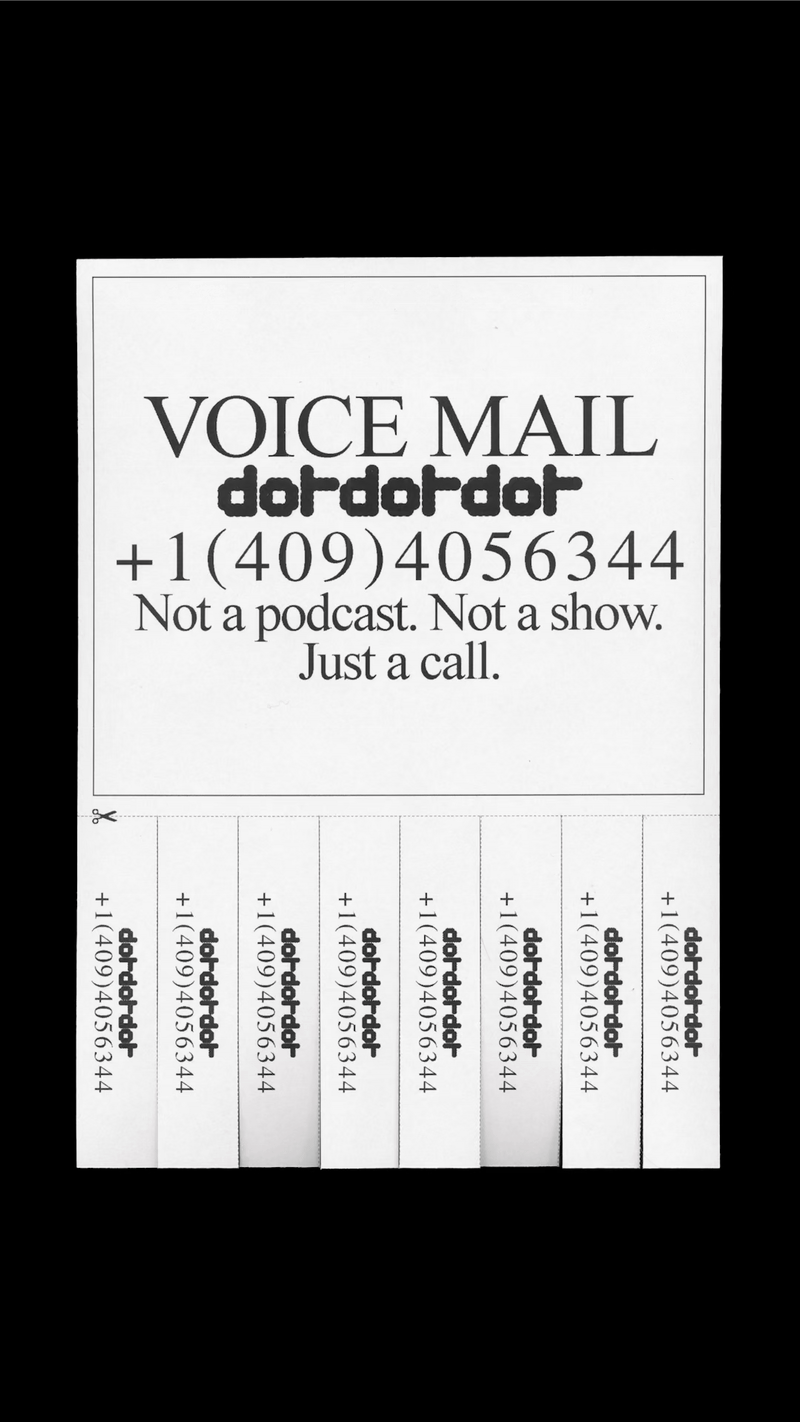What do Caspar David Friedrich, plates on walls and Substacks about running have in common? They’re all signs of a major cultural shift: the Romantic Revival.
The Met’s recent Caspar David Friedrich: The Soul of Nature exhibition has been a blockbuster, a tribute to the 19th-century painter whose landscapes made nature a mirror of the soul. Friedrich’s work championed individual perception and feeling over cold rationalism, ideals that a The Guardian cultural critic notes are “still vital today”. Friedrich’s apparent revival has led commentators to herald a “new romanticism” – a nascent rebellion against Big Tech’s cold empiricism in favour of subjectivity, individuality, emotion, mysticism and awe in the face of nature.
The trend isn’t limited to galleries: aesthetic maximalism is creeping back into our homes. Interior design trend pieces are filled with open shelves, mismatched china and the return of texture, warmth and lived-in-ness. We’re trading the perfect grid for the personal vignette. Longform is thriving again – in podcasts, newsletters and conversation-driven formats that reward attention and curation. And brands? The smartest ones are leaning in.
Today we’re exploring how a centuries-old cultural movement is reshaping today’s brand and communication strategies. More importantly, we’re also looking at why it’s happening.
After all, this is a response to the flattening effects of tech, algorithm fatigue and the sense that we’ve been optimised out of feeling anything at all. Having said that, don’t get it twisted: this isn’t about rejecting technology, it’s about reclaiming how we use it and injecting a little more humanity into the process along the way.
Act
It’s not a smart conversation if there’s nothing to talk about.
Start with the right strategy and execution to prove you can walk the talk.
Selling features with feelings
Romanticism 1.0 was a cultural response to industrialisation and rationalism toward the end of the 18th Century. It’s no surprise then that those same themes are finding fresh relevance in modern brand strategy, but we would certainly be hard-pressed to make a serious case that feeling always triumphs over function in modern purchase behaviour. Arguably with current economic headwinds, product is the most important P there is.
What the hell are we getting at? Brands looking to engineer communication strategies around a return to Romanticism should not assume that we’re suggesting you forget about your performance marketing entirely, or cut R&D in favour of a big TVC. You still need to be able to walk the talk: we’re not purporting that USPs are out and vibes are in. We’re asserting that the way all this is communicated will shift. Audiences still want you to prove your product does a good job, but increasingly, the way they feel about it is what makes them listen.
Tech companies – ironically – have understood this for years. Apple didn’t build a trillion-dollar brand by focusing on processors and specs. It built mythology. Its 1984 Super Bowl spot positioned a new kind of computer as a force of creative liberation. The product itself was barely shown. And in the decades since, Apple has doubled down on this formula: humanity first, hardware second (Apple “1984”, Shot on iPhone).
Telstra has caught on. Its 2024 “Wherever We Go” campaign used whimsical animation and wall murals to paint the brand as a companion, not a carrier. The entire campaign was built on sentiment, not signal strength.
But today, it’s not just tech giants leading with emotion. It’s running shoes. It’s fragrance. It’s coffee. The Romantic turn is everywhere.
Running is perhaps the most interesting lens. It has become the unlikely spiritual home of Romantic branding strategy, perhaps because the nature of the sport is so intrinsic to the whole movement itself: it’s just you, nature and some time to think. Plus, if you’re lucky, you get to feel shin splints.
On top of this, running actually demands reliable and durable products: running tech is very heavy on features that promote practicality. That’s what makes it the perfect place to study how brand strategy works in the new-new-Romantic era. Brands like On, HOKA and Satisfy are building campaigns not around winners, but around wanderers. Their ads don’t scream “train harder”, they whisper: go outside, feel something (again, like shin splints), let us be your gateway to the rest of the world. It’s about finding ways to prove your product is a facilitator of human experience.
It makes sense: the Romantic movement, at its core, was about rejecting rationalism and returning to the self. Through nature. Through solitude. Through experience. It’s no wonder we’re turning to existentialism while the Western world is in an existential crisis.
Satisfy’s campaigns feel more like film stills than product showcases. Their photography is grainy, introspective, quiet. HOKA, once seen as a niche ultra-runner brand, is now fashion (somehow). And therapy. And lifestyle. On is threading emotional language into even their most technical products.
As Ana Andjelic writes, we’re seeing sport reinterpreted as spiritual practice: a way to feel more alive in an overstimulated world.
The brands that will thrive are those that understand what the Romantics did all along: people don’t just want tools. They want meaning.
Explain
How big ideas are translated into words that resonate, build identity and set the context for a smart conversation
Lyrical language and “flourish over function”
Sure, the Romantic movement is a lot more than flowery words (we just spent a whole section explaining that). But did you think we were going to skip over the Romantic poets in our section dedicated to copy? Not a chance.
In an era recently dominated by snappy sound bites and programmatic ad copy, we’re seeing an occasional – and welcome – return to flourish: lush, lyrical copywriting and long-form content that prioritise atmosphere over efficiency.
Of course this doesn’t work for everyone, but it’s a signal to experiment, and if a slightly quirky tone of voice works for your audience, don’t let the LinkedIn broets convince you otherwise. You can be a Shelley, Byron, Keats or Wordsworth too.
We’ve seen ad slogans that read like haiku and marketing emails that feel like personal letters. In a world of AI-autogenerated blah, brands are rediscovering the power of a distinctive human voice – even if it waxes a little poetic.
One emblem of this trend is an unlikely hero: Desmond & Dempsey’s Sunday Paper, a (sadly since ended) quarterly print newsletter from a luxury pyjama brand. Yes, you read that right – a printed newspaper sent out with fancy PJs, filled with musings on lazy mornings and far-flung daydreams. Admittedly, the editor and brains behind said paper was SKMG’s NYC consultant Sam Hillman but the point stands). Sunday Paper was explicitly created “in celebration of slowness, indulgence, adventure, and freedom”, encouraging readers to spend a day lounging, brunching and savouring life.
Desmond & Dempsey literally packaged slow living and literary flourish alongside their product. The newsletter (which quickly sold out each issue) was part lookbook, part literary magazine, designed to channel “that slow Sunday feeling” and deliver a “physical intimacy” with readers that glowing screens can’t match. It’s marketing was prose – soulful, unhurried and deeply on-brand for a company selling the romance of a lazy Sunday in linen pajamas.
They were not alone. Many brands are embracing prose and print to cut through digital fatigue. High-end fashion labels produce broadsheet “magazines” to tell their story in paragraphs and pictures rather than pop-up ads. Designer Simone Rocha, for one, insists – in the above piece – that thoughtful printed materials must be part of the brand experience. She wants people to “leave with something even if they don’t want to spend £1,000 on a dress”. It’s a give-before-you-take philosophy: provide a rich narrative or aesthetic experience up front. Niche brands like Norwegian Rain echo this, publishing their own newspapers because it “fits with our philosophy of slow fashion and… timeless craftsmanship”. You’re not even half way through this newsletter at word 1,277 because maybe we agree.
In an age of endless scrolling, these brands bet that readers will pause for a beautiful story (especially if it comes on thick, textured paper with that new-ink smell). By indulging in a bit of Romantic-era extravagance they forge a stronger emotional bond with their audience. But don’t confuse this as flourish over function per se: remember new-new-Romanticism still demands you contribute value. The content isn’t just long-form or difficult to access, it’s worth making the effort for.
Even in more conventional ad channels, poetic copywriting is making a comeback. Case in point: last year’s campaign for Moccona coffee spun a modern fairy tale. In the TV spot, a wandering jar of Moccona coffee serendipitously reunites two separated lovers in a charming European town. The tagline? “Awaken the romantic within”.
The brand’s marketing director proudly noted that Moccona has “consistently used emotional storytelling…to connect with Australians”, and this latest campaign “sparks the thrill of romance and possibility” rather than, say, highlighting artisan roasting techniques. It’s a coffee commercial that’s more about destiny and magic than dark roast vs. medium.
Skincare brand Aesop, famous for its eloquent product descriptions, explicitly champions this approach. “Aesop is a big fan of poetic expression — because those are the ones that stay with you,” says the brand’s creative director. In their view, purple prose isn’t a bug; it’s a feature that makes the message memorable.
This Romantic Revival in brand language is a reaction to years of minimalist, hyper-efficient communication. After endless tweets and algorithm-optimised headlines, there’s a craving for voice, for quirk, for the a sense that a real human with passions (and maybe a bloody good thesaurus) is behind the words. Note this doesn’t mean writing like your customer’s bestie… we’ve already covered that. When done right, this forges identity. If that identity gels with your customers, in the words of Dr Marcus Collins, you’ve just found someone to preach your gospel.
Amplify
A conversation means someone has to listen and respond. Cleverly amplifying the message to the right audience, at the right time, is the final piece of the puzzle.
Slow stories, deep connections
The Romantic Revival isn’t confined to advertising – it’s part of a broader shift in media and content consumption. Slower, richer storytelling is taking hold across the cultural landscape, from indie newsletters to experimental podcasts.
After years of bite-sized content and hyper-personalised feeds, many people are gravitating toward media that feels more intimate, intentional and, yes, even a bit inefficient. The paradox of our time is that as technology delivers content faster and AI chatbots simulate endless “conversation”, we find ourselves valuing human-paced, human-voiced experiences more than ever.
Consider the humble newsletter. Once left for dead by RSS feeds and Twitter streams, the long-form newsletter has been revived via platforms like Substack – essentially personal letters from writers to readers, often with cult followings. One standout example pushing the envelope (literally) is Dot Dot Dot, a creative newsletter/podcast hybrid that recently tried a delightfully retro experiment: delivering a new format that takes place as a phone call. Yes, subscribers have to call a phone number to listen in on a conversation like a cheeky kid on the home phone in the 1990s. It’s a quirky, analog stunt that flies in the face of frictionless digital UX.
By adding an extra hurdle – making listeners actively dial in and eavesdrop – the creators injected a sense of occasion and intimacy into the experience. Yeah, sure, it adds an extra hurdle to the experience, but in doing so you’re forcing the audience to show intent. In a world of passive autoplay, intentionality is the new luxury. The listeners who took the trouble to call felt like participants in something special, not just consumers of another feed update. If the product or content is valuable enough – as argued in Explain – this is an incredible way to make your message stick. It’s a Romantic notion if ever there was one: the journey (or in this case, the phone call) enriches the destination.
We’re also seeing this hunger for deeper connection play out in the booming world of podcasts and long-form audio. Today’s popular podcasts often stretch past the one-hour mark, with conversational meanders that would horrify a traditional radio producer. But audiences are here for it. Tuning into a favourite podcast can feel like catching up with friends, a far cry from the old broadcast model of polished, scripted segments.
Listeners develop parasocial relationships with hosts, those one-sided bonds where you feel you know these people who have no idea you exist. By some accounts, more than half of people (admittedly, Americans) have parasocial relationships of some kind, and podcast hosts rank right up there with YouTubers and celebrities as objects of our affection. Far from being embarrassed about it, many celebrate it as a new form of community. “In our loneliest hours, podcasters can offer a social lifeline” writes one journalist, noting that these audio companions can help ease the modern loneliness epidemic. There’s even an argument that parasocial podcast relationships are both a symptom of our lonely age and a potential salve – they fill a social need, albeit virtually, by providing consistent voices that we grow to trust and love. People now proudly signal their favourite long-form podcasts as part of their identity (merch, Reddit fandoms and all), which brings us back to Dr Marcus Collins: “We live in a culturally constructed world where the branded products we consume and display are used to signal our constructed identity.”
In his view, consumption – whether of products or media – is a cultural act, a way to say “this is who I am”. So if you religiously listen to a three-hour history podcast or an introspective interview series, that means something. It’s an identity marker, a flag of values and curiosity, much like carrying a well-worn novel or vinyl record might have been in earlier days.
Crucially, these slower media formats emphasise conversation and personality over slick production. The newsletter author writes in the first person, maybe with typos, tangents or references to shin splints. The podcast host banters and shows vulnerability. It’s raw and authentic by design. This fosters a sense of community and belonging among audiences, even if it’s technically one-way. People don’t just want content; they want connection. They want to feel seen and understood by the media they choose and they reciprocate by becoming ardent, engaged followers. It’s telling that some podcasts now host live call-in shows or create Discord groups, blurring the line between creator and audience conversation. The currency is conversation itself: being part of an ongoing dialogue, not just a faceless view count. In an age where social media often feels performative or toxic, these intimate media spaces are refreshingly human-scale.
There is a larger cultural move at play, one toward depth over speed. We’ve spent two decades optimising for seamlessness. But if the audience now craves participation over passivity, friction becomes a feature. It tells the user: this is worth your time.
So what’s next?
AI is about to collapse the top of the funnel into chat. When everything becomes a 1:1 interface, what makes someone stay? It won’t be functionality, it will be tone, texture and conversational personality. If the future of the web is dialogue, then what we’re seeing now in the productisation of podcasts and analog formats is the dress rehearsal.
We’re already seeing brands design with this in mind. Building formats that feel like relationships. Layering intentionality into channel. Moving away from performance comms into presence comms. The most effective messages will no longer be the most immediate. They will be the ones that feel like they were meant for you and no one else.
Conversation is no longer just the vehicle. It’s the destination. And it’s guiding the way the entire interface of culture is being rebuilt.
For further reading, check out this Kyle Chaka piece or just do the right thing and follow Rory Sutherland.
Picks & Recs
Due to the long-winded nature of this piece we are only offering up this single strong image for this issue’s Picks & Recs. Do with it what you will.












